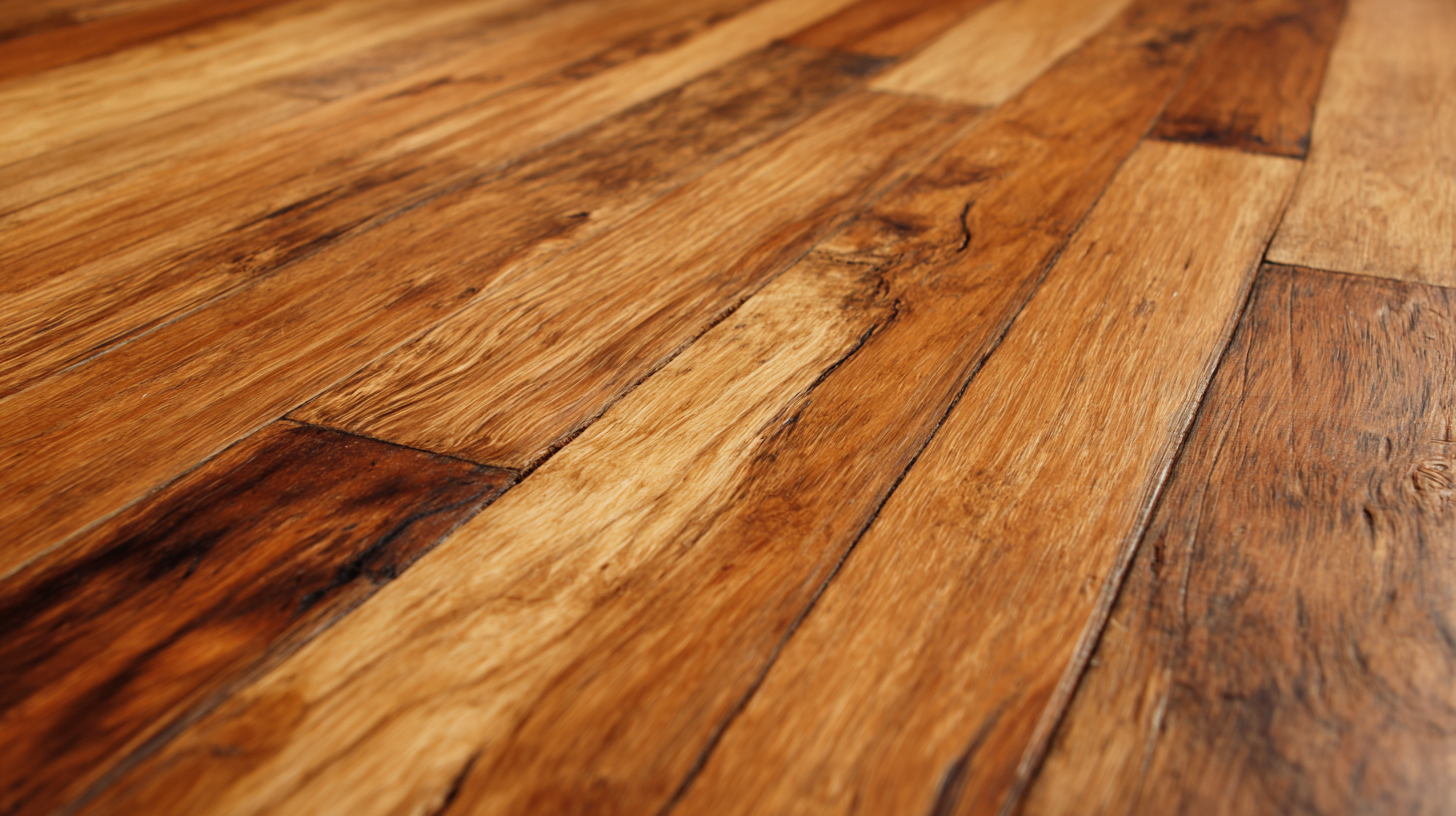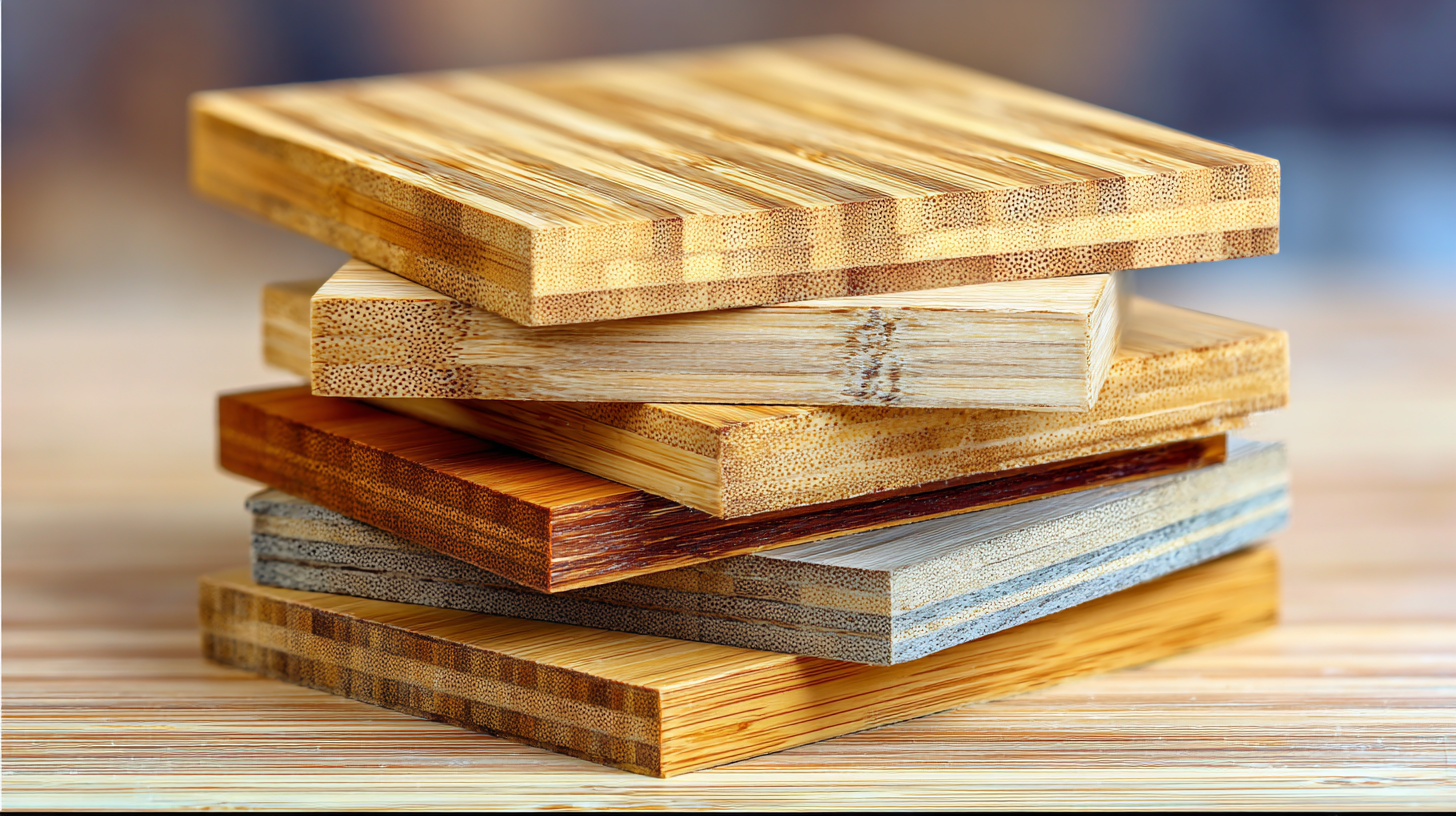Leave Your Message
-
Whatsapp
-
Whatsapp
As the world increasingly shifts towards sustainable living, the demand for eco-friendly building materials has surged, with bamboo plywood flooring emerging as a frontrunner. According to a report by Research and Markets, the global bamboo flooring market is expected to grow at a CAGR of 10.2% from 2023 to 2028, reflecting a significant movement towards sustainable alternatives. Bamboo, known for its rapid growth and minimal environmental impact, offers a renewable resource that not only reduces deforestation but also sequesters carbon, making it an ideal choice for eco-conscious consumers. With advancements in technology and design, bamboo plywood flooring is not only durable and aesthetically pleasing but also aligns perfectly with the burgeoning desire for sustainable living solutions.

This blog will explore seven compelling reasons why bamboo plywood flooring represents the future of sustainability in the construction and interior design industries.
Bamboo plywood flooring is emerging as a front-runner in the quest for sustainable living, offering a wealth of eco-friendly advantages that make it an attractive choice for conscious consumers. One of the most significant benefits of bamboo is its rapid growth rate; it can reach maturity in just three to five years, making it a renewable resource that reduces the pressure on traditional hardwood forests. This fast growth also means that harvesting bamboo has a minimal impact on the environment, unlike conventional timber farms that require years—if not decades—of growth.
In addition to its sustainability, bamboo plywood flooring boasts exceptional durability and versatility. Naturally resistant to moisture and pests, bamboo provides a durable solution suitable for various climates and applications. The manufacturing process has also evolved to prioritize eco-friendliness, often using non-toxic adhesives and finishes, which contribute to better indoor air quality. Choosing bamboo plywood not only supports a greener planet but also enhances the aesthetic appeal of living spaces, making it an ideal choice for environmentally minded homeowners.

Bamboo plywood flooring stands out as a superior choice in sustainable living due to its remarkable durability and strength. According to the National Wood Flooring Association, bamboo has a Janka hardness rating of around 1,300 to 1,400, making it significantly tougher than many traditional hardwoods like oak and maple, which typically range between 1,000 and 1,400. This intrinsic strength allows bamboo flooring to withstand heavy foot traffic and resist dents and scratches, making it an ideal option for both residential and commercial spaces.
Moreover, the longevity of bamboo flooring is enhanced by its natural resistance to moisture and pests. A report by the International Bamboo and Rattan Organization indicates that properly treated bamboo can last up to 25 years when maintained correctly, compared to the average lifespan of conventional hardwoods, which can be between 10 to 20 years. This durability not only reduces the frequency of replacements but also contributes to a lower overall environmental impact, aligning perfectly with sustainable living principles. As more homeowners seek eco-friendly options, bamboo plywood flooring emerges as a forward-thinking solution, combining style, resilience, and sustainability seamlessly.
Bamboo flooring has emerged as a game-changer in home design, infusing living spaces with a unique blend of elegance and sustainability. Its natural aesthetic appeal is unmatched, as the rich tones and distinctive grain patterns can complement various interior styles, from modern minimalism to rustic charm. The warm hues of bamboo create an inviting atmosphere, making any room feel more open and connected to nature.
Moreover, bamboo's versatility allows it to be used in various applications, such as in living rooms, bedrooms, and even kitchens. The sleek finish of bamboo flooring not only enhances the visual appeal but also reflects light beautifully, adding to the overall brightness of a space. This luminous quality, combined with its durability, ensures that bamboo flooring remains a stylish choice for years to come. Emphasizing both beauty and eco-friendliness, bamboo flooring is not just a trend—it’s a forward-thinking solution for sustainable living that transforms your home into a serene sanctuary.
| Reason | Details | Environmental Impact | Aesthetic Benefits |
|---|---|---|---|
| Sustainability | Bamboo is a fast-growing plant that regenerates quickly without the need for replanting. | Helps reduce deforestation and lowers carbon emissions. | Provides a natural and elegant look to any room. |
| Durability | Bamboo flooring is known for its strength and durability, making it resistant to wear and tear. | Longer lifespan compared to traditional hardwoods. | Adds a modern touch without compromising on strength. |
| Versatility | Available in various styles, colors, and finishes to match any decor. | Supports diverse interior design choices while being eco-friendly. | Enhances the visual appeal of both contemporary and traditional settings. |
| Cost-Effectiveness | Often more affordable than other flooring options while offering similar benefits. | Less environmental cost due to faster production rates. | Gives a premium feel at a fraction of the price. |
| Health Benefits | Bamboo is naturally resistant to mold and pests. | Promotes a healthier living environment. | Creates a warm and inviting atmosphere. |
| Ease of Installation | Many bamboo flooring options come in easy-to-install formats like click-lock. | Less energy consumed during installation reduces overall impact. | Quick and clean installation process enhances renovation experiences. |
| Renewable Resource | Bamboo can be harvested every 3-5 years with minimal ecological disruption. | Promotes responsible sourcing and sustainable forestry practices. | Adds a unique natural texture to flooring designs. |
When considering flooring options, bamboo plywood stands out not just for its aesthetic appeal, but also for its cost-effectiveness. Although the initial investment might seem higher than traditional wood or vinyl, bamboo flooring pays off in the long run. Its robustness and resilience mean fewer repairs and replacements, which translates to significant savings over years. Furthermore, bamboo grows quickly, making it a renewable resource that won't strain your budget or the environment.
To maximize your investment, consider these tips: first, choose high-quality bamboo flooring from reputable manufacturers to ensure durability and longevity. Second, proper installation can enhance the material's lifespan, so hiring professionals or adequately preparing yourself for a DIY project is essential. Lastly, maintaining your bamboo floors with regular cleaning and occasional refinishing will keep them looking new while further extending their lifespan, ultimately leading to increased savings.
The sustainability of bamboo extends beyond its renewal; it's also about energy efficiency. Bamboo flooring helps regulate indoor temperatures, reducing the need for extensive heating or cooling and lowering your energy bills. By opting for bamboo, you're not only investing in a stylish and economical choice but also embracing a commitment to sustainable living that benefits the planet and your wallet alike.

Bamboo plywood flooring has rapidly gained popularity due to its numerous practical benefits, particularly in terms of installation and maintenance. One of the standout features is its user-friendly installation process. Many homeowners appreciate that bamboo plywood can often be installed using a click-lock mechanism, allowing for a hassle-free experience even for those who are not seasoned DIYers. Reports indicate that this type of flooring can be installed up to 30% faster than traditional hardwood flooring, making it a time-efficient choice that saves both labor costs and your valuable time.
In addition to ease of installation, bamboo plywood flooring stands out for its low-maintenance requirements. Unlike some hardwood alternatives that demand regular polishing and refinishing, bamboo plywood typically requires only routine cleaning with a damp cloth and occasional sweeping. This is particularly advantageous for busy households, as it reduces the ongoing upkeep often associated with traditional flooring materials. The robustness of bamboo also offers an impressive durability factor, with some studies showing it can withstand wear comparable to oak. With growing awareness of sustainability, investing in bamboo plywood flooring not only enhances the beauty of your home but also supports an eco-friendly lifestyle, thus contributing to the future of sustainable living.
This bar chart illustrates the sustainability scores of various flooring materials, showcasing bamboo plywood as a highly sustainable choice for eco-friendly living.
